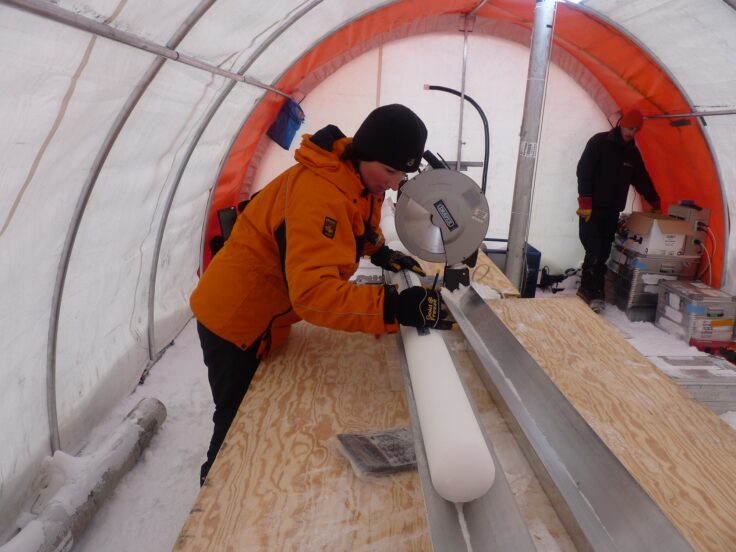A new study of snowfall across Antarctica provides vital information in the study of future sea-level rise.
A team of scientists from NASA and British Antarctic Survey (BAS), describes how analysis of 53 ice cores collected from across Antarctica reveals snowfall increased during the 20th century and mitigated sea-level rise by 10 mm. However, Antarctica’s additional ice mass gained from snowfall only makes up for about a third of its overall ice loss. The study is published in the journal Nature Climate Change this week (Monday 10 December).
Co-author and ice core scientist Dr Liz Thomas from British Antarctic Survey explains:
“Sea-level rise is an urgent issue affecting society and there is still uncertainty about what contribution comes from Antarctica.
“Our new results show a significant change in the surface mass balance (from snowfall) during the twentieth century. The largest contribution is from the Antarctic Peninsula, where the annual average snowfall during the first decade of the 21st century is 10% higher than at the same period in the 19th century. From the ice cores we know that the current rate of change in snowfall is unusual in the context of the past 200 years.”

The increases in snowfall do not contradict observations of glacial retreat and mass loss in regions of West Antarctica such as Pine Island and Thwaites Glacier, which are collectively contributing around 14% of global sea-level rise.
Lead author Dr Brooke Medley from NASA Goddard Space Flight Center says:
“Our findings don’t mean that Antarctica is growing: it’s still losing mass, even with the extra snowfall. What it means, however, is that without these gains, we would have experienced even more sea-level rise in the 20th century.”
The team also investigated what caused the increase of snowfall and its distribution pattern over the ice sheet from 1901 to 2000. They found that it was consistent with a warming atmosphere, which holds more moisture, combined with changes in the Antarctic circumpolar westerly winds that are related to the ozone hole.
Increased snowfall over the Antarctic Ice Sheet mitigated 20th century sea level rise by B. Medley1† and E.R. Thomas2 is published in the journal Nature Climate Change on Monday 10 December 2018.
Ends
Notes to Editors
Dr Liz Thomas will be presenting this work at AGU on Friday 14th (08:00) in session C51A: Advances in Observing and Modeling Ice Sheet and Ice Shelf Surface Mass Balance: Past, Present, and Future. More here: https://agu.confex.com/agu/fm18/meetingapp.cgi/Session/60377
The Antarctic Ice Sheet (AIS) is the largest reservoir of fresh water on the planet and has the potential to raise sea level by about 58.3 metres if it melted completely (IPCC 2013). Even small changes in its volume could have significant impacts, not just on global sea level, but also on the wider hydrological cycle, atmospheric circulation, sea surface temperature, ocean salinity and thermohaline circulation.
In order to better constrain predictions of future contributions to global sea level, it is therefore of vital importance to gain a thorough understanding of past and present changes in Surface Mass Balance (SMB) and its relationship with the climate system.
Ice cores taken from central Antarctica and Greenland have revealed how the temperature and the greenhouse gases such as carbon dioxide and methane have varied over periods as long as 800,000 years.
Snowfall is very difficult to measure over Antarctica. There are very few weather stations in the frozen continent, and most of them are installed along the coastline. In addition, satellites struggle to measure snow from space. Climate models struggle to replicate the total amount of snow that falls over Antarctica each year, so scientists often have to rely on ice cores, cylinders of ice drilled from the ice sheet whose layers store a trove of information; amongst it, how much snow fell in a certain year or decade. But drilling ice cores is logistically challenging, so they are sparse and do not cover the entire continent.
